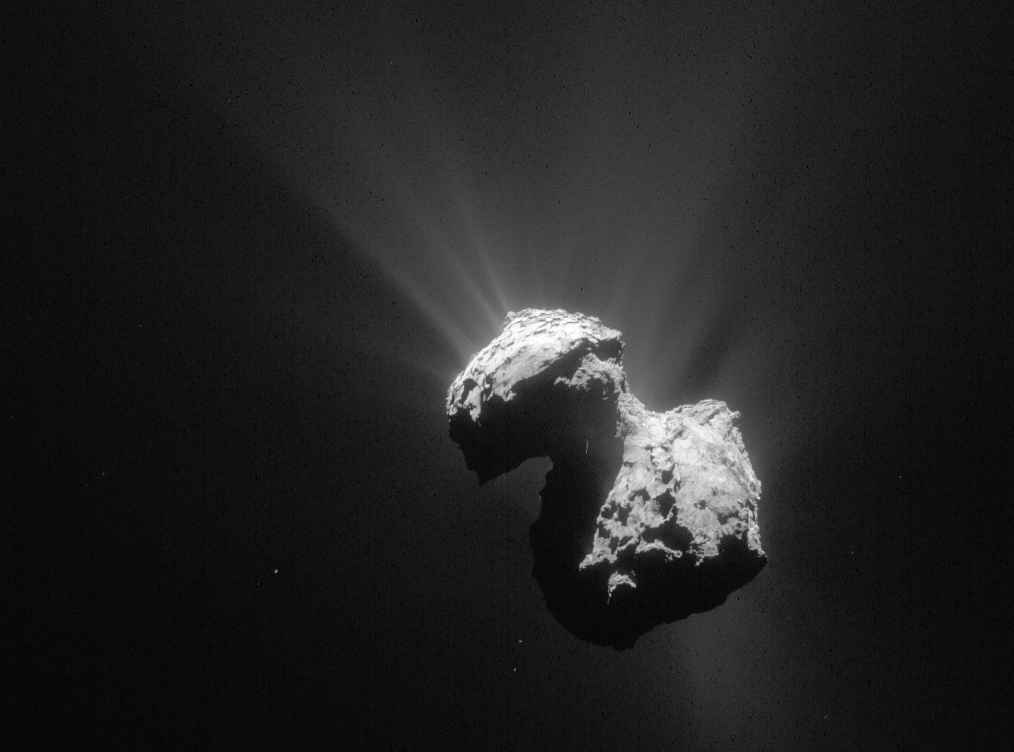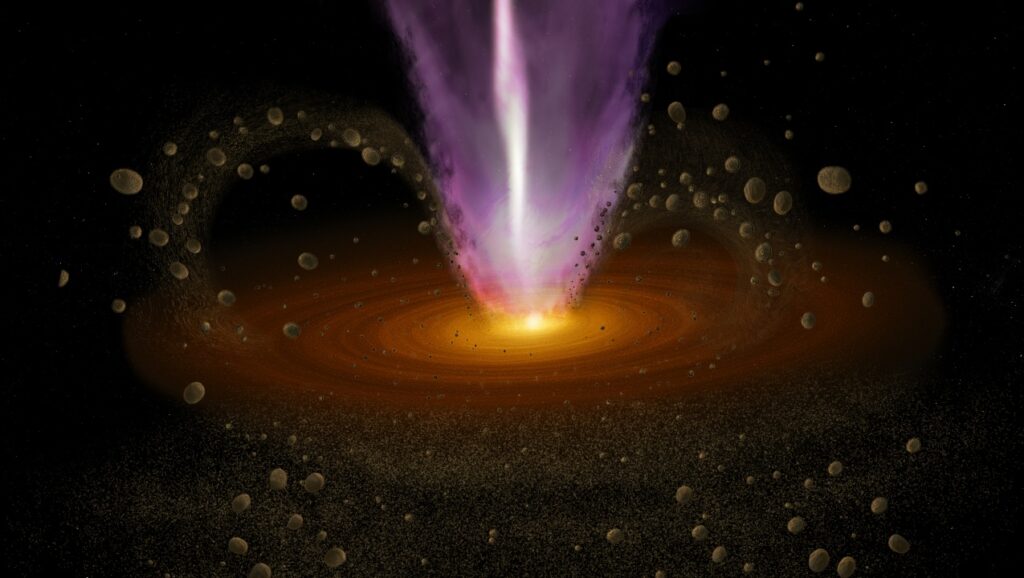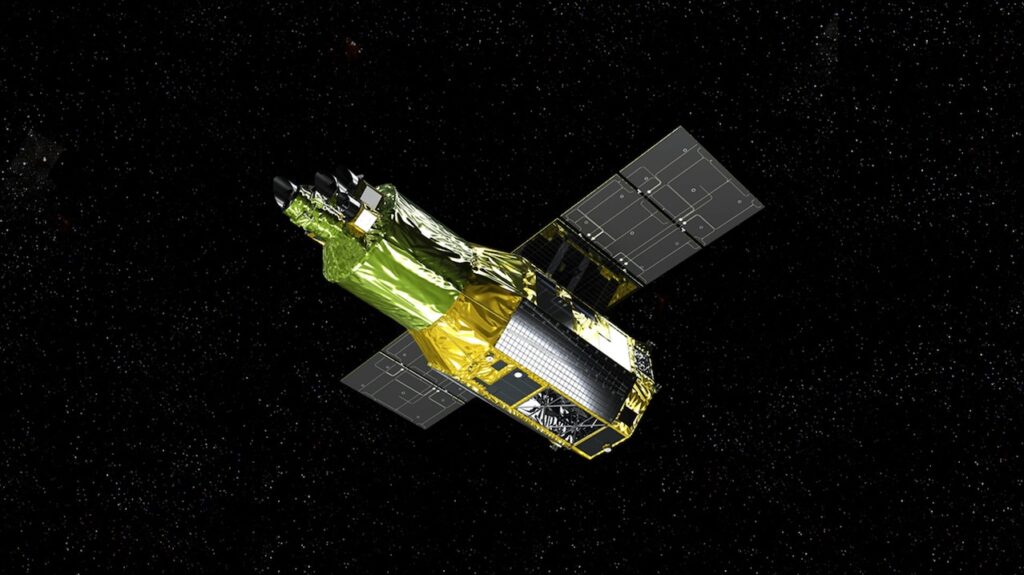Comet Nuclei Composition And Evolution

Thanks to Rosetta orbiter’s and Philae lander’s data our knowledge of cometary nuclei composition has experienced a great advancement.
The properties of 67P/CG nucleus are discussed and compared with other comets explored in the past by space missions. Cometary nuclei are made by a collection of ices, minerals, organic matter, and salts resulting in very dark and red-colored surfaces. When far from the Sun, exposed water and carbon dioxide ices are found only in few locations of 67P/CG where the exposure of pristine subsurface layers or the recondensation of volatile species driven by the solar heating and local terrain morphology can sustain their temporary presence on the surface.
The nucleus surface appears covered by a dust layer of variable thickness. Dust grains appear mostly dehydrated and are made by an assemblage of minerals, organic matter, and salts. Spectral analysis shows that the mineral phase is dominated by silicates, fine-grained opaques and ammoniated salts.
Aliphatic and aromatic groups, with the presence of the strong hydroxyl group, are identified within the organic matter. The surface composition of cometary nuclei evolves with heliocentric distance and seasonal cycling: approaching perihelion the increase of the solar flux boosts the activity through the sublimation of volatiles which in turn causes the erosion of surface layers, the exposure of ices, the activity in cliffs and pits, the collapse of overhangs and walls, and the mobilization and redistribution of dust.
The evolution of color, composition, and texture changes occurring across different morphological regions of the nucleus are correlated with these processes. In this chapter we discuss 67P/CG nucleus composition and evolutionary processes as observed by Rosetta mission in the context of other comets previously explored by space missions or observed from Earth.
Gianrico Filacchione, Mauro Ciarniello, Sonia Fornasier, Andrea Raponi
Comments: 46 page, 34 figures, 4 tables, Chapter in press for the book Comets III, edited by K. Meech and M. Combi, University of Arizona Press
Subjects: Earth and Planetary Astrophysics (astro-ph.EP)
Cite as: arXiv:2210.02741 [astro-ph.EP] (or arXiv:2210.02741v1 [astro-ph.EP] for this version)
https://doi.org/10.48550/arXiv.2210.02741
Focus to learn more
Submission history
From: Gianrico Filacchione
[v1] Thu, 6 Oct 2022 08:11:01 UTC (85,425 KB)
https://arxiv.org/abs/2210.02741
Astrobiology, Astrochemistry,








